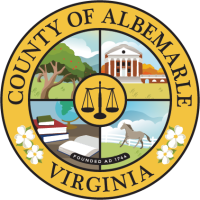Phase 2 - Conservation
Phase 2 - Conservation
Many Crozet residents have shared that they value opportunities for recreation, open space, and protecting natural resources. We invite you to discuss potential projects and recommendations that may address the community's goals regarding parks, greenways, regional connections, and sustainability. Your participation in this questionnaire will be used to draft recommendations in the Conservation Chapter of the Crozet Master Plan.
Each response is recorded individually. If you can’t respond to every question all at once (or only want to answer questions for a specific area), you can come back at any time and resume.
The Board of Supervisors reviewed the County's draft Climate Action Plan (CAP) in June 2020. The CAP identifies major strategies to mitigate Albemarle's contribution to greenhouse gas emissions and climate change. Phase 1 of the CAP focuses on five sectors:
- Transportation and Land Use
- Buildings
- Renewable Energy Sourcing
- Sustainable Materials Management
- Landscape, Natural Resources, and Agriculture
While the objectives in the Crozet Master Plan's Connectivity and Character chapters support the "Transportation and Land Use" sector strategies by encouraging alternative forms of transportation through urban design and land use, the recommendations in the Master Plan's Conservation chapter will more directly address the "Landscape, Natural Resources, and Agriculture" sector.
Certain areas of Crozet are particularly important for natural resource conservation:
- The portion of the Crozet Development Area north of the railroad drains into Beaver Creek Reservoir, which is Crozet's drinking water supply. This includes a significant portion of the community that developed before stream buffer and water quality regulations were in effect.
- Three streams within the Development Area are impaired, meaning that they fail to meet water quality standards: Lickinghole Creek, Slabtown Branch, and a tributary of Parrott Branch.
- Portions of the Crozet Development Area are within the Northwest Albemarle Conservation Focus Area in the County's Biodiversity Action Plan. This area contains significant forest blocks.
- Three additional "Important Sites" identified in the Biodiversity Action Plan include bald eagle nests near Lickinghole Basin, Beaver Creek Reservoir, and Mechum's River.
Tree cover, water resources, and habitat are closely related, and strategies for protecting these resources often overlap. Maintaining large forest blocks can help support water quality and biodiversity. The health of these areas can be supported by:
- Avoiding forest block fragmentation (creating smaller areas due to new construction) and leaving larger areas intact. This can be done by strategically clustering development.
- Retaining or restoring native vegetation.
- Connecting large forest blocks with vegetated corridors to allow wildlife to travel between blocks,
- Vegetated stream buffers are important for:
- Water quality & stormwater management: Vegetation absorbs water and filters pollutants that run off from urban areas before they enter the water. Vegetation can also absorb water and release it more slowly during the course of a heavy rain event, mitigating flooding.
- Wildlife habitat: These buffers provide corridors that allow wildlife to travel safely between forest blocks.
